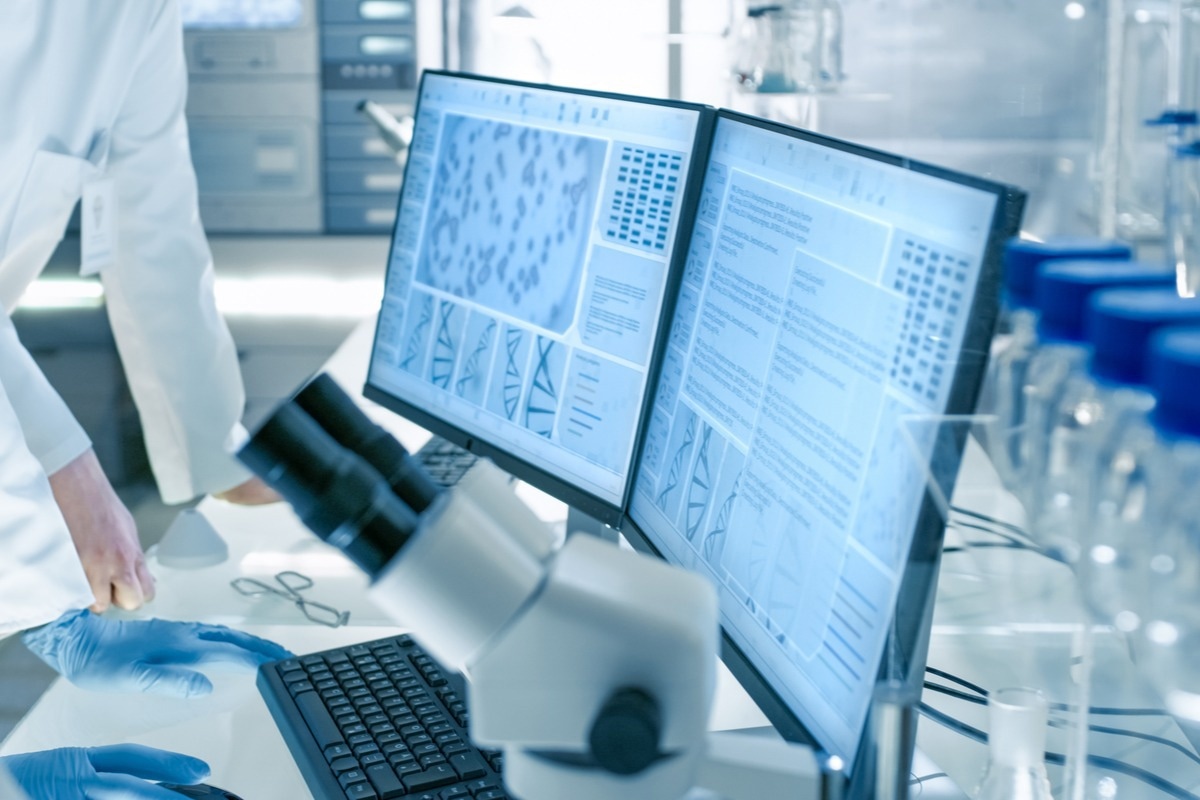Why do we need computational biomedicine?
How have computational methods enhanced biology and medicine?
Difficulties in computational biomedicine
Looking forward
References
Further reading
The application of computer-based tools and methodologies to simulate and model the human body in health and disease is known as computational biomedicine. It is a new, rapidly growing field consisting of the entire spectrum of human biology, physiology, and disease, collectively known as medicine. This includes everything from genomics to the entire human body, epidemiology, and population health. Computational biomedicine involves molecular medicine, simulation, modeling methods, imaging techniques, and information technology.

Image Credit: bluesroad/Shutterstock.com
Why do we need computational biomedicine?
From a biological cell consisting of hundreds of different chemicals that operate together, to the billions of cells that make up our tissue, organs, and organ systems, to our society, which is made up of 6 billion unique interacting individuals, humans are unique, complex systems with a plethora of information to be explored. Such complicated systems do not consist of identical and interchangeable components. Individuals have distinct personalities and bring distinct worth and contributions to the systems in which they participate. Therefore, it is necessary to accurately store, identify and apply this information for both clinical and research purposes.
Biological systems span many orders of magnitude throughout the scales, from the tiniest microscopic sizes to the biggest macroscopic scales. Multi-scale, multi-science systems connect the genome, proteome, metabolome, and physiome to health. Computational biomedicine has developed incredibly sophisticated tools to model and simulate fundamental processes in natural systems on various scales in recent years.
How have computational methods enhanced biology and medicine?
Along with its empirical legacy, the increasing ubiquity of electronic information significantly supports the further advancement of medicine as a data-driven, evidence-based science. Medical imaging, electronic/computerized patient records, and automation of clinical studies have enhanced patient data storage. As a result, medicine is forming ever-closer ties with engineering, computer science, and statistics.
In biology, researchers have a pressing need for support, direction, and collaboration to interpret data generated by high-throughput genomics, including the Human Genome Project, Single Nucleotide Polymorphism Initiative, and Arabidopsis Genome Initiative. It is not possible to underestimate the relevance of data management and systematic and integrated data analysis tools in biology and medicine.
For both practice and research, information technology provides a realistic platform for improved integration of the various biological and medical fields. As a result, we are seeing the convergence of many fields related to the use of computation and information technology in biology and medicine. One of the most intriguing applications of molecular simulation in clinical medicine is determining which medicines a given genotype or genetic variant will respond to most successfully.

Image Credit: angellodeco/Shutterstock.com
The neuromusculoskeletal system is affected by a wide range of diseases, including those that have a high disease burden, such as Parkinson's disease, arthritis, and osteoporosis. To mention a few applications, computational biomedicine has been used to forecast the force required to fracture bones, simulate the force-generating process of entire muscles, and examine diseased neuromuscular control.
Difficulties in computational biomedicine
In contrast to molecular medicine, modeling methods are more usually of a continuum character, involving the solution of partial differential equations in three-dimensional space and time. Solving such equations with the proper boundary conditions is difficult; doing it quickly and properly is even more difficult. It recommends the employment of powerful supercomputers and scalable codes that can take full advantage of modern computing gear. Most present algorithms and software implementations find this a difficult assignment due to the rising complexity and variety of emerging exascale infrastructures.
The relatively restricted computational capabilities available within a hospital are a key barrier restricting the full potential of simulations to assist in diagnosing and treating diseases in a clinical setting. As patient data must be protected by law and cannot be exported to more powerful machines, one solution is to construct reduced-order models based on pre-simulated data that physicians can perform cheaply.
To achieve the highest throughput rates, it is necessary to have access to the most recent supercomputers, which are based on a vast proliferation of nodes, each of which contains large numbers of cores and accelerators (mostly general-purpose graphics processing units), enabling ensemble-based simulations of very large numbers of ligand-protein simulations. However, even the world's most powerful supercomputers can't keep up with the demands of solving the most difficult medical problems.

Image Credit: Gorodenkoff/Shutterstock.com
The challenge is that, while computing technology has outpaced practically every other field by orders of magnitude, it is still too sluggish to be applied to many large-scale complex systems. Worse, the processing chips' intrinsic speed has slowed due to nearing physical limits and the need to lower the power consumption and energy dissipation of the behemoths we use for this study. As a result, it is necessary to continually be on the lookout for new and innovative types of computing.
The lack of publicly accessible datasets is another problem in biomedicine. The issue is not that researchers are unwilling to communicate their findings. They are, on the other hand, ready to disperse them. The problem is that such datasets are expensive to acquire, keep, and maintain in many circumstances. Legal and privacy concerns complicate the problem.
Looking forward
High-performance computing has become an integral part of many aspects of computational biomedicine, and it is a driving force behind developing these thematic issues. As these resources become more widely available and their performance capabilities improve, simulation codes must be modified to take advantage of them.
Modeling the vasculature (the network of arteries and veins that transport blood) is also a significant focus of computational biomedicine. Machine learning holds potential as a less computationally demanding surrogate for inclusion in clinically based decision support systems for identifying categories of observed behavior. The distributed human intelligence, which entrusts the duty of classifying medical images requiring a profound understanding of the field to untrained persons, is a potential strategy to solve the inadequate availability of biomedical data. Surprisingly, the findings show that the same degree of accuracy can be attained, reducing the expenses and time required by qualified experts.
Finally, it is important to understand that computational biomedicine is not limited to simulating specific events that occur within the human body; it may also be a useful tool in supporting doctors in making diagnostic judgments in the face of ever-increasing amounts of data.
References
- Coveney Peter V., Hoekstra Alfons, Rodriguez Blanca and Viceconti Marco 2021Computational biomedicine. Part II: organs and systems Interface Focus.112020008220200082. https://doi.org/10.1098/rsfs.2020.0082
- Coveney Peter V. 2020Computational biomedicine. Part 1: molecular medicineInterface Focus.102020004720200047. https://doi.org/10.1098/rsfs.2020.0047
- Kocheturov, A., Pardalos, P.M. & Karakitsiou, A. Massive datasets and machine learning for computational biomedicine: trends and challenges. Ann Oper Res 276, 5–34 (2019). https://doi.org/10.1007/s10479-018-2891-2
- Sloot, P. M., & Hoekstra, A. G. (2010). Multi-scale modelling in computational biomedicine. Briefings in bioinformatics, 11(1), 142–152. https://doi.org/10.1093/bib/bbp038
- Moreau, Y., Antal, P., Fannes, G., & De Moor, B. (2003). Probabilistic graphical models for computational biomedicine. Methods of information in medicine, 42(2), 161–168. 10.1055/s-0038-1634328
Further Reading